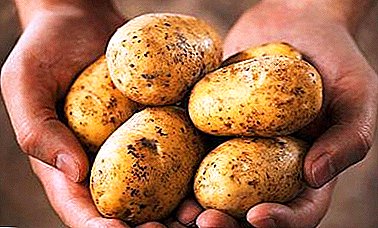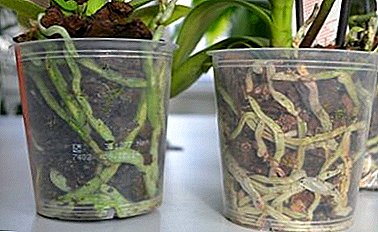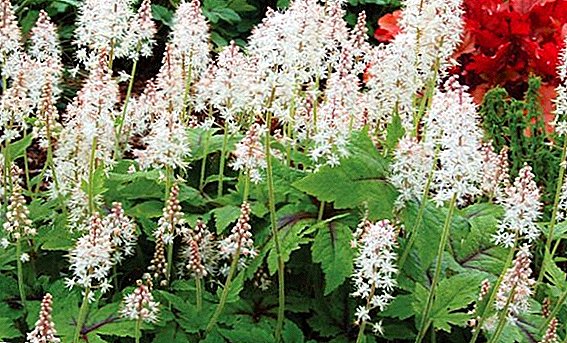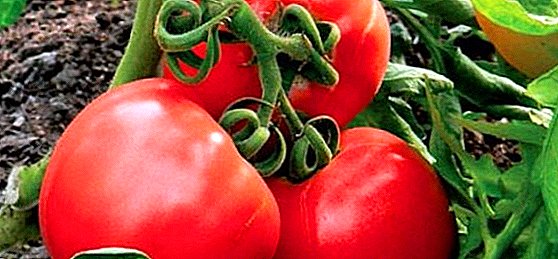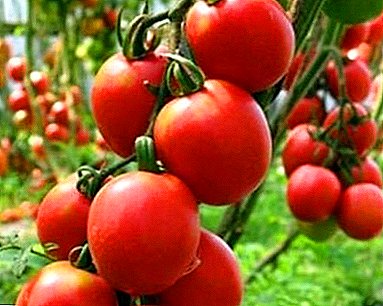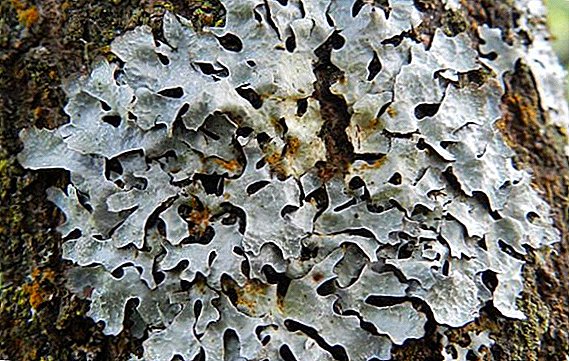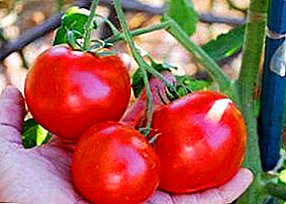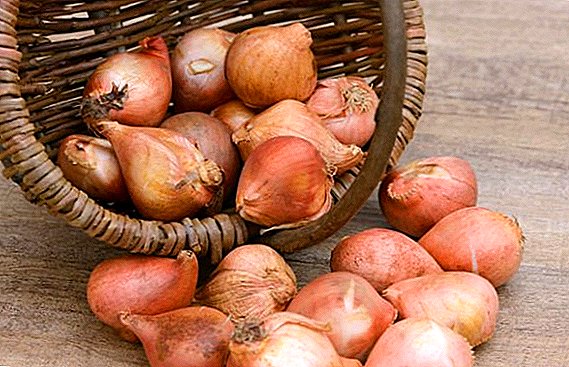 Poddubovik, or dubovik mushroom, is a rare species that grows only under certain conditions. Where to collect such mushrooms, how they look, how to clean the subdub and prepare a tasty dish from it - let's take a closer look.
Poddubovik, or dubovik mushroom, is a rare species that grows only under certain conditions. Where to collect such mushrooms, how they look, how to clean the subdub and prepare a tasty dish from it - let's take a closer look.
Edible or not
This mushroom of the borovik genus belongs to the category of conditionally edible mushrooms. This means that the mushroom is edible when cooked - in the same raw it can not be used: it can cause intoxication of the body. Dubovik mushroom contains toxic substances that are destroyed only by heat treatment.
Find out which representatives of borovik are edible and inedible.
Appearance
The characteristic name of the poddubovik received due to the place of its distribution - these mushrooms grow mainly near the oak groves. According to external data is similar to white mushroom. 
Hat
It can reach impressive sizes (up to 23 cm in diameter). The color varies from light green to deep brown and brown. A characteristic feature of the poddubovik - when you click on the cap are small greenish specks that pass with time. The shape of the cap is standard: a hemisphere, may have a hillock in the center of the cap, and maybe, on the contrary, completely flat. Occasionally there is a cap, round from all ends, enveloping the leg, like a cap. Under the influence of moisture, the hat of the sub-indicator becomes slippery and sticky, slightly rough to the touch. 
Leg
Depending on the size of the cap, it can reach 20 cm in height. The leg is strong, thick, similar to a mace. The color of the legs also varies from olive to deep brown. Over the entire length, there is a mesh pattern on which small red pores appear. When you press on the leg may be covered with bluish spots.
Did you know? In some regions, dubovik is called "blue mushroom" or "bruised" - he got this nickname due to his ability to acquire a blue tint when in contact with air.
Pulp
Podubovik pulp is always yellow, when in contact with the air becomes a bluish tint. The taste and smell in raw form are not pronounced, there is no sharpness or fruity aroma. It has a fleshy texture. 
Spore powder
The spores of the poddubovika always pronounced, the size of 10-17h5.2-6.2 mm. The color of the powder is varied - from olive and light green to brown and dark brown.
Twin Mushrooms
Dubovik has the greatest similarity with white mushroom - they have in common not only almost identical appearance, but also the time of maturation: the end of May and the beginning of September.  The main difference between the poddubovik and the white fungus is its ability to be covered with blue specks when pressed or in contact with air, as well as the characteristic mesh pattern on the leg.
The main difference between the poddubovik and the white fungus is its ability to be covered with blue specks when pressed or in contact with air, as well as the characteristic mesh pattern on the leg.
Learn more about white mushrooms: types, properties, harvesting (freezing); and also about what mushrooms grow in May.
If you make a mistake and collect a white mushroom instead of a poddubovik, there will be no harm: the white mushroom is not only edible and absolutely harmless, but also has an excellent taste, which cannot be said about satanic mushroom - poisonous and toxic.  It differs from a dubovik with a thicker leg, the absence of a mesh pattern on it, a sharp unpleasant smell and color of the cap: from white to olive. Often a satanic mushroom grows with a dubovik - it forms near an oak, beech, chestnut, linden, which significantly increases the risk of confusing it with edible boletus.
It differs from a dubovik with a thicker leg, the absence of a mesh pattern on it, a sharp unpleasant smell and color of the cap: from white to olive. Often a satanic mushroom grows with a dubovik - it forms near an oak, beech, chestnut, linden, which significantly increases the risk of confusing it with edible boletus.
Important! Satanic fungus in some countries is considered conditionally edible, but it is known that its toxins can cause indigestion. If you are in doubt and cannot determine which species in front of you is a dubovik or satanic mushroom, it is better not to cut off such specimens or use the help of an experienced mushroom picker.
Another poddubovika double is edible yellow boletus - Mushroom, common in the forests of Western Europe. The main difference from a dubovik is the color of the cap and leg: it is yellow or orange-yellow, which gave the name to such an instance.
Where and when to collect
Dubovik is formed and ripens in the warm season - from mid-June to early September. Distributed in oak and mixed forests of Europe, is found in Siberia and the Far East. It can grow not only near the oak thickets, but also near the birch, beech, chestnut. Prefers calcareous soil, air quality is also selective: a dubovik does not grow near polluted areas or near highways. One of the conditions of growth is also a sufficient amount of sunlight. Sometimes found in swampy areas.
Familiarize yourself with the lists of popular edible types of mushrooms and the TOP-15 edible mushrooms of Ukraine.
Eating
This mushroom is most often used as a base for a spicy snack, as well as an independent pickled dish. All parts of the dubovik are used: the leg and the cap do not have a solid texture, therefore they are well heat-treated. Due to the lack of bright individual taste, when cooking such a mushroom, a large number of spices and spices are used. 
How and how much to cook
Due to the fact that a subdub contains a certain amount of toxins, it is impossible to cook it without soaking it beforehand. Before proceeding to cooking, washed and cleaned dubovik kept in salted water for about 20-30 minutes. Then, drain the water, dubovik boil in fresh water for 15 to 30 minutes from the moment of boiling, depending on the size of the poddubovik. Dried dubovik are subject to obligatory cooking - they are boiled for 30 minutes: this amount of time will be enough for all the toxic elements of the dried mushroom to be completely destroyed.
We advise you to read about the technology of harvesting mushrooms: pickling, salting, drying, freezing.
How to pickle
The poddubik truly reveals its taste and aroma during pickling: subject to the rules and the recipe, it gets a very pleasant taste.
For the preparation of pickled dubovik need:
- podduboviki - 1 kg .;
- Vinegar 9% - 2 tablespoons;
- lemon acid;
- water - 250 ml;
- sugar - 1 tbsp. spoon;
- salt - 1 tbsp. spoon;
- allspice and black pepper, garlic, cloves, dill, coriander - to taste.
Cooking method:
- Peeled, washed and presoaked Dubovik boiled for 15-20 minutes. Then the water needs to be drained.
- Prepare marinade: bring water to a boil, add sugar, salt, peppercorns, dill, coriander and cloves. After boiling boil for 5-7 minutes.
- Put the boiled duboviki in a jar, pour marinade and add vinegar and garlic.
- The jar is sealed tightly, allowed to cool at room temperature.
 These pickled podduboviki stored in a cool dark place (can be on the balcony or cellar).
These pickled podduboviki stored in a cool dark place (can be on the balcony or cellar).Did you know? Dubovik mushroom is also used for medical purposes: some amino acids in its composition can prevent the formation and spread of malignant tumors, and tincture on the basis of poddubovik used to treat depression and chronic fatigue.
Precautions and symptoms of poisoning
Dubovik, unlike ryezhik or yellow boletus, cannot be consumed raw: it contains toxic substances that can cause significant harm to the body. It must be boiled, fried or marinated before being eaten. It is not recommended to eat podduboviki in combination with alcoholic beverages, as well as people with problems of the digestive tract. Children, pregnant women and nursing mothers should also not eat podduboviki: as a result of improper preparation, they can significantly reduce the protective functions of the body.
Symptoms of dubovik poisoning are:
- sharp pain in the abdomen;
- nausea;
- dizziness;
- blanching;
- the appearance of bluish or yellow spots on the skin;
- fever and fever.
At the first signs of intoxication, immediately flush the stomach with water with a weak solution of potassium permanganate and call for emergency care: you may have cooked and ate a poisonous fungus. Any delay can cost life, so even if you feel a slight discomfort, still ask for help from a doctor.  Poddubovik is a rare species that is rarely found in the forest. However, he, with proper preparation, has a very pleasant taste and aroma, and dishes from it can be a worthy decoration of the table. Be careful when collecting and cooking dubovik: consider the mushroom well before preparing it - perhaps there is a poisonous look among the collected specimens. Consult an experienced mushroom picker or simply do not cook with mushrooms that are suspicious: you will protect yourself from possible poisoning.
Poddubovik is a rare species that is rarely found in the forest. However, he, with proper preparation, has a very pleasant taste and aroma, and dishes from it can be a worthy decoration of the table. Be careful when collecting and cooking dubovik: consider the mushroom well before preparing it - perhaps there is a poisonous look among the collected specimens. Consult an experienced mushroom picker or simply do not cook with mushrooms that are suspicious: you will protect yourself from possible poisoning.


